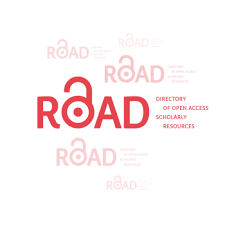Experimental Study of I-V Characteristics Dye Sensitizer Solar Cell Based on Carotenoid and Photoelectrode TiO2
DOI:
https://doi.org/10.31571/jpsa.v8i1.8968Keywords:
Dye Sensitized Solar Cell (DSSC), Slipcating, TiO2, I-V characteristicsAbstract
Dye sensitizer solar cell (DSSC) is one of the photoelectrochemical cells consisting of photoelectrode, dye, electrolyte, and counter electrode. This article presents experimental data of I-V characteristics of DSSC made from carotenoid and photoelectrode TiO2. Optimization of carotenoid concentration in ethanol and optimization of TiO2 concentration in slipcasting method were investigated. It was found that TiO2 concentration gave significant effect in slipcasting method. Current-voltage (I-V) characteristics of DSSC made from carotenoid produced open circuit voltage (VOC) of 480 mV, short circuit current density (JSC) of 28 μA/cm2, Fill Factor (FF) = 0.37 and photoelectric conversion efficiency (η) 5.07 × 10-3%.
Downloads
References
dedokun, O., Titilope, K., & Awodugba, A. O. (2016). Review on Natural Dye-Sensitized Solar Cells (DSSCs). In INTERNATIONAL JOURNAL of ENGINEERING TECHNOLOGIES Oluwaseun Adedokun et al (Vol. 2, Issue 2).
Al-Alwani, M. A. M., Mohamad, A. B., Ludin, N. A., Kadhum, A. A. H., & Sopian, K. (2016). Dye-sensitised solar cells: Development, structure, operation principles, electron kinetics, characterisation, synthesis materials and natural photosensitisers. In Renewable and Sustainable Energy Reviews (Vol. 65, pp. 183–213). Elsevier Ltd. https://doi.org/10.1016/j.rser.2016.06.045
Bella, F., Gerbaldi, C., Barolo, C., & Grätzel, M. (2015). Aqueous dye-sensitized solar cells. In Chemical Society Reviews (Vol. 44, Issue 11, pp. 3431–3473). Royal Society of Chemistry. https://doi.org/10.1039/c4cs00456f
Francis, O. I., & Ikenna, A. (2021). Review of Dye-Sensitized Solar Cell (DSSCs) Development. Natural Science, 13(12), 496–509. https://doi.org/10.4236/ns.2021.1312043
Mahmoudi, T., Wang, Y., & Hahn, Y. B. (2018). Graphene and its derivatives for solar cells application. In Nano Energy (Vol. 47, pp. 51–65). Elsevier Ltd. https://doi.org/10.1016/j.nanoen.2018.02.047
Mariotti, N., Bonomo, M., Fagiolari, L., Barbero, N., Gerbaldi, C., Bella, F., & Barolo, C. (2020). Recent advances in eco-friendly and cost-effective materials towards sustainable dye-sensitized solar cells. In Green Chemistry (Vol. 22, Issue 21, pp. 7168–7218). Royal Society of Chemistry. https://doi.org/10.1039/d0gc01148g
Shakeel Ahmad, M., Pandey, A. K., & Abd Rahim, N. (2017). Advancements in the development of TiO2 photoanodes and its fabrication methods for dye sensitized solar cell (DSSC) applications. A review. In Renewable and Sustainable Energy Reviews (Vol. 77, pp. 89–108). Elsevier Ltd. https://doi.org/10.1016/j.rser.2017.03.129
Sharma, K., Sharma, V., & Sharma, S. S. (2018). Dye-Sensitized Solar Cells: Fundamentals and Current Status. In Nanoscale Research Letters (Vol. 13). Springer New York LLC. https://doi.org/10.1186/s11671-018-2760-6
Suhaimi, S., Shahimin, M., Alahmed, Z. A., Chyský, J., & Reshak, A. H. (2015). Materials for Enhanced Dye-sensitized Solar Cell Performance: Electrochemical Application. In Int. J. Electrochem. Sci (Vol. 10). www.electrochemsci.org
Zulkifili, A. N. B., Kento, T., Daiki, M., & Fujiki, A. (2015). The Basic Research on the Dye-Sensitized Solar Cells (DSSC). Journal of Clean Energy Technologies, 3(5), 382–387. https://doi.org/10.7763/jocet.2015.v3.228
Downloads
Published
How to Cite
Issue
Section
License
Copyright (c) 2025 Boisandi

This work is licensed under a Creative Commons Attribution-NonCommercial 4.0 International License.
Authors who publish with this journal agree to the following terms:
Authors retain copyright and grant the journal right of first publication with the work simultaneously licensed under a Creative Commons Attribution License that allows others to share the work with an acknowledgment of the work's authorship and initial publication in this journal.
Authors are able to enter into separate, additional contractual arrangements for the non-exclusive distribution of the journal's published version of the work (e.g., post it to an institutional repository or publish it in a book), with an acknowledgment of its initial publication in this journal.
Authors are permitted and encouraged to post their work online (e.g., in institutional repositories or on their website) prior to and during the submission process, as it can lead to productive exchanges, as well as earlier and greater citation of published work.
-
Abstract0
-
pdf1

 Download: 0
Download: 0






